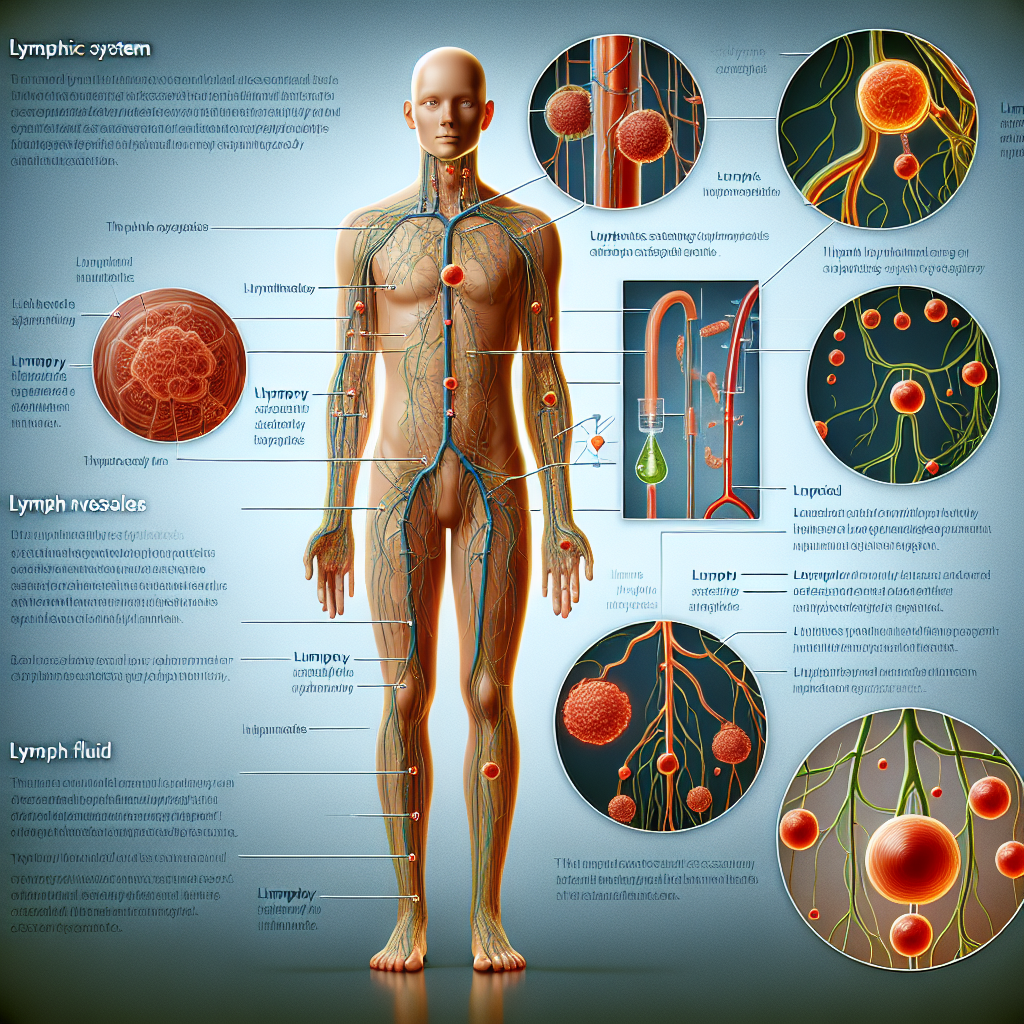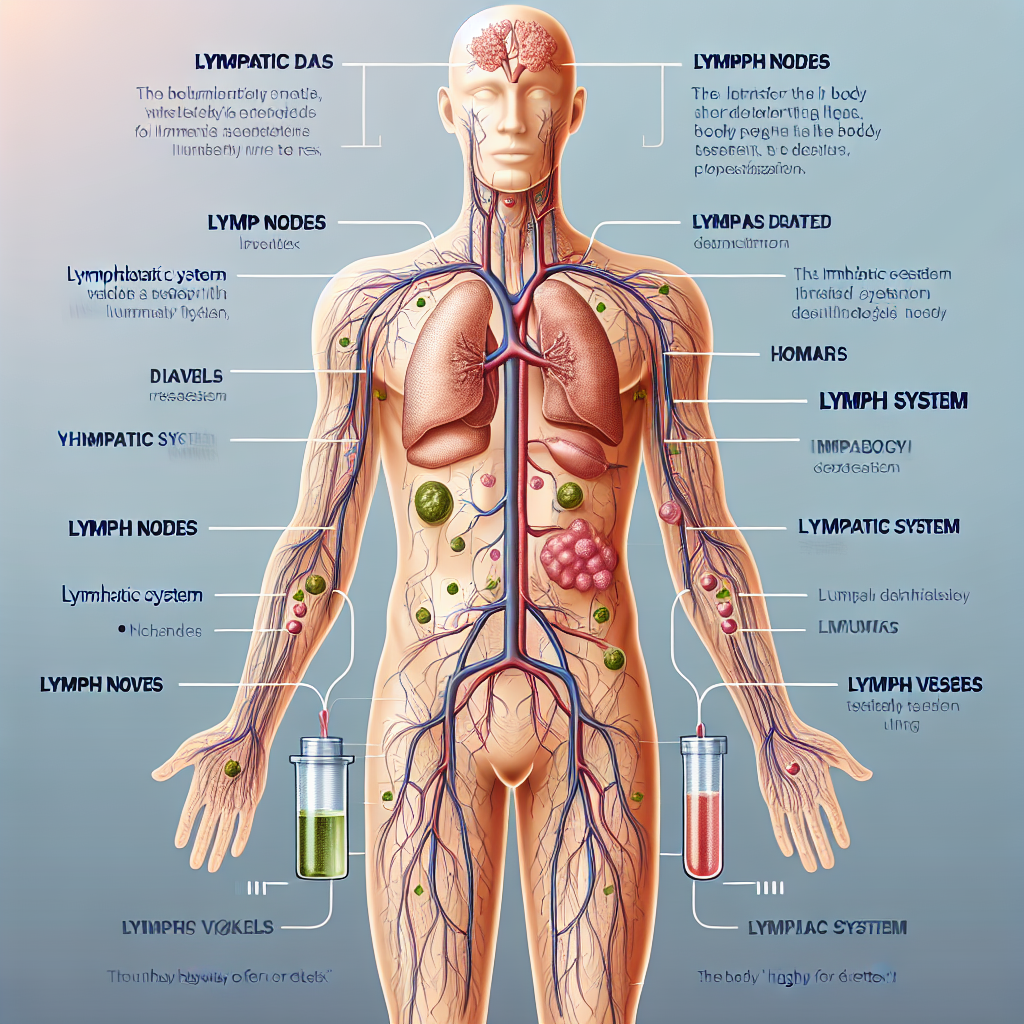Lymphatic Drainage: How to Support Your Body’s Detox Highway

Discover more about Lymphatic Drainage and how to support your body’s detox highway. Learn the importance of this process and how you can enhance it for better health. Visit My Vibrant Vitality now.
Understanding the Role of Lymphatic Drainage in Body Detoxification
The human body is a marvel of interconnected systems, each playing a crucial role in maintaining overall health and well-being. One such system, often overlooked, is the lymphatic system. This network of tissues and organs is responsible for the removal of toxins, waste, and other unwanted materials from the body. It is, in essence, the body’s detox highway. Understanding the role of lymphatic drainage in body detoxification can provide valuable insights into maintaining optimal health.
The lymphatic system is composed of lymph nodes, lymph vessels, and lymph fluid. Lymph nodes, small structures scattered throughout the body, act as filters for harmful substances. Lymph vessels, akin to veins and capillaries, carry lymph fluid, a clear-to-white fluid rich in white blood cells that combat infection. This fluid transports waste products away from tissues and towards the lymph nodes for filtration. This process is known as lymphatic drainage.
Lymphatic drainage is a natural and vital process that helps the body detoxify. However, factors such as sedentary lifestyle, poor diet, and stress can impede its efficiency, leading to a buildup of toxins in the body. This can manifest in various ways, including fatigue, bloating, swollen glands, skin problems, and susceptibility to sickness and disease.
To support lymphatic drainage and, by extension, the body’s detoxification process, several strategies can be employed. Firstly, regular physical activity is essential. Exercise, particularly activities that involve jumping or bouncing, such as rebounding, can stimulate the flow of lymph fluid and promote detoxification. Additionally, deep breathing exercises can aid in lymphatic drainage as the act of breathing itself helps to move lymph fluid through the body.
Secondly, hydration is key. Drinking plenty of water aids in maintaining optimal lymph fluid volume, facilitating the transportation and removal of toxins. Moreover, a diet rich in nutrient-dense, whole foods can provide the necessary vitamins and minerals to support the lymphatic system. Foods high in antioxidants, such as berries, green leafy vegetables, and nuts, are particularly beneficial.
Thirdly, lymphatic drainage massages can be a valuable tool in supporting the lymphatic system. These specialized massages use gentle pressure and rhythmic circular movements to stimulate lymph flow. They can be performed by a trained therapist or even self-administered with the right knowledge and techniques.
Lastly, stress management is crucial. Chronic stress can lead to inflammation and impede lymphatic function. Techniques such as yoga, meditation, and mindfulness can help manage stress levels and support overall lymphatic health.
In conclusion, the lymphatic system plays a pivotal role in body detoxification. Supporting lymphatic drainage through regular exercise, proper hydration, a nutrient-rich diet, lymphatic massages, and stress management can significantly enhance the body’s natural detoxification process. By understanding and supporting our body’s detox highway, we can contribute to our overall health and well-being.
Effective Techniques for Enhancing Lymphatic Drainage for Detoxification

The lymphatic system, often referred to as the body’s “detox highway,” plays a crucial role in maintaining our overall health. It is a complex network of tissues and organs that help rid the body of toxins, waste, and other unwanted materials. The primary function of the lymphatic system is to transport lymph, a fluid containing infection-fighting white blood cells, throughout the body. However, unlike the circulatory system, the lymphatic system does not have a pump. It relies on our daily movements and breathing to circulate. Therefore, it is essential to understand how to support and enhance lymphatic drainage for effective detoxification.
One of the most effective techniques for enhancing lymphatic drainage is through physical activity. Regular exercise, particularly aerobic activities like walking, jogging, or swimming, can significantly improve lymphatic flow. These activities encourage deep breathing and muscle movement, both of which are essential for pushing the lymph fluid through the body and ultimately aiding in detoxification.
In addition to regular exercise, manual lymphatic drainage (MLD) can also be beneficial. MLD is a type of gentle massage that encourages the movement of lymph fluids around the body. The process involves applying light pressure and rhythmic circular movements to stimulate lymph flow. This technique is particularly beneficial for individuals suffering from lymphedema, an accumulation of lymph fluid that can occur after lymph node removal.
Another technique that can support lymphatic drainage is dry brushing. This ancient practice involves brushing the skin in a particular pattern with a dry brush, usually before showering. The brushing motion stimulates the lymphatic system, helping to accelerate the removal of toxins from the body. It also exfoliates the skin, increases blood circulation, and promotes a sense of wellbeing.
Hydration is another critical factor in promoting healthy lymphatic function. Water is a key component of lymph fluid, and without adequate hydration, the lymphatic system can’t function optimally. Drinking plenty of water helps ensure that the lymphatic system has the fluid it needs to carry toxins out of the body.
Diet also plays a significant role in supporting lymphatic drainage. Consuming a nutrient-rich diet full of leafy greens, fruits, and lean proteins can help ensure the lymphatic system functions properly. Foods rich in antioxidants, such as berries, garlic, and green tea, can also support lymphatic health by combating harmful free radicals in the body.
Lastly, deep breathing exercises can also aid in lymphatic drainage. Deep, diaphragmatic breathing can help stimulate the lymphatic system and promote detoxification. This is because deep breathing results in pressure changes within the thorax, which helps to move lymph fluid through the body.
In conclusion, supporting your body’s lymphatic system is crucial for maintaining overall health and effective detoxification. Regular exercise, manual lymphatic drainage, dry brushing, staying hydrated, consuming a nutrient-rich diet, and practicing deep breathing exercises are all effective techniques for enhancing lymphatic drainage. By incorporating these practices into your daily routine, you can help ensure your body’s detox highway is functioning at its best.
The Impact of Lymphatic Drainage on Your Body’s Detox Highway
The lymphatic system, often referred to as the body’s “detox highway,” plays a crucial role in maintaining our overall health. It is a complex network of tissues and organs that help rid the body of toxins, waste, and other unwanted materials. The primary function of the lymphatic system is to transport lymph, a fluid containing infection-fighting white blood cells, throughout the body. However, unlike the circulatory system, which has the heart to pump blood, the lymphatic system lacks a central pump. This is where lymphatic drainage comes into play.
Lymphatic drainage is a therapeutic massage technique that stimulates the flow of lymph fluid around the body. This process helps to speed up the removal of wastes and toxins from a sluggish lymphatic system. It can be particularly beneficial for individuals suffering from medical conditions such as lymphedema, fibromyalgia, and other conditions involving chronic pain or inflammation.
The impact of lymphatic drainage on the body’s detox highway is profound. By manually stimulating the lymphatic system, lymphatic drainage helps to increase circulation and reduce swelling, both of which can significantly enhance the body’s ability to detoxify. When the lymphatic system is not functioning optimally, toxins can build up in the body, leading to a host of health problems, including fatigue, bloating, and a weakened immune system. Lymphatic drainage can help to alleviate these symptoms by improving the flow of lymph fluid and, consequently, the removal of toxins from the body.
Moreover, lymphatic drainage can also have a positive impact on the immune system. The lymphatic system is intimately connected with the immune system. The lymph nodes, which are scattered throughout the body, produce and store cells that help the body fight infection and disease. By stimulating the flow of lymph fluid, lymphatic drainage can help to strengthen the immune system, making it more effective at warding off illness.
In addition to its detoxifying benefits, lymphatic drainage can also have a positive impact on the skin. By improving circulation and reducing swelling, lymphatic drainage can help to give the skin a healthier, more youthful appearance. It can be particularly beneficial for individuals suffering from skin conditions such as acne, eczema, and rosacea, which can be exacerbated by the buildup of toxins in the body.
While lymphatic drainage can be incredibly beneficial, it’s important to note that it’s not suitable for everyone. Individuals with certain medical conditions, including congestive heart failure, blood clots, kidney problems, and certain types of cancer, should avoid lymphatic drainage. Always consult with a healthcare professional before beginning any new health regimen.
In conclusion, lymphatic drainage plays a vital role in supporting the body’s detox highway. By stimulating the flow of lymph fluid, it helps to speed up the removal of toxins, reduce swelling, improve circulation, and strengthen the immune system. Whether you’re looking to enhance your body’s natural detoxification processes, improve your skin health, or boost your immune system, lymphatic drainage may be worth considering. However, as with any health regimen, it’s important to consult with a healthcare professional to ensure it’s right for you.